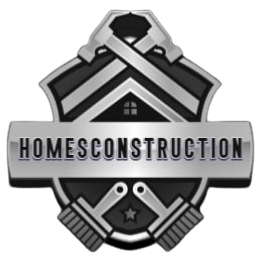Drywall is an essential material in modern construction, providing the smooth, finished surfaces that form the walls and ceilings of homes. Different types of drywall offer various benefits, depending on their intended use, whether for standard living spaces, moisture-prone areas, or fire-rated zones. Understanding the different types of drywall and their materials helps homeowners and builders make the best choice for each project. Here’s a guide to the most common drywall types & materials used in home construction.
1. Standard Drywall: The Everyday Choice
Standard drywall, also known as regular or white board, is the most common type used in residential construction. It consists of a gypsum core sandwiched between two layers of paper, creating a flat, smooth surface that’s easy to paint or finish. Standard drywall comes in various thicknesses, with 1/2 inch being the most popular for walls and 5/8 inch often used for ceilings.
This type of drywall is ideal for most rooms, including living rooms, bedrooms, and hallways. It provides a clean, even surface that’s easy to install and repair, making it the go-to choice for basic interior walls.
2. Moisture-Resistant Drywall: Protecting Wet Areas
Moisture-resistant drywall, often referred to as green board due to its green paper facing, is designed for areas exposed to high humidity or occasional moisture. This drywall contains a special core and moisture-resistant paper that help prevent mold growth and water damage. Green board is commonly used in bathrooms, kitchens, and laundry rooms, where exposure to water is more likely.
While green board offers enhanced moisture resistance, it is not waterproof. For areas with direct water exposure, such as shower walls, cement board or waterproof drywall would be more suitable.
3. Fire-Resistant Drywall: Safety First
Protect people and property with fire-resistant drywall (Type X). Its specialized design actively slows fire spread, ensuring enhanced safety in residential and commercial buildings. It contains non-combustible fibers within the gypsum core, making it denser and more fire-resistant than standard drywall. Building codes require Type X drywall in fire-rated walls, ceilings, and areas such as garages, furnace rooms, and shared walls with adjacent buildings
Fire-resistant drywall typically comes in 5/8-inch thickness and provides about an hour of fire resistance, depending on installation. It’s a crucial material for meeting building codes and enhancing the overall fire safety of a home.
4. Soundproof Drywall: Reducing Noise
Soundproof drywall, also known as sound-dampening or acoustic drywall, is designed to reduce noise transfer between rooms. It contains layers of gypsum mixed with additional soundproofing materials like polymers, increasing its density and ability to absorb sound waves. This type of drywall is perfect for home theaters, bedrooms, or any area where noise reduction is important.
Installing soundproof drywall helps create quieter, more comfortable living spaces. Boost noise reduction by combining it with other soundproofing techniques, including insulation and soundproofing panels.
5. Mold-Resistant Drywall: Extra Protection in Damp Areas
Mold-resistant drywall is similar to moisture-resistant drywall but offers enhanced protection against mold growth. It uses a fiberglass mat instead of paper facing, which resists mold better in damp conditions. Protect bathrooms, basements, and high-risk areas from mold with this specialized drywall, the go-to choice for builders and contractors
Mold-resistant drywall is a great choice for health-conscious homeowners looking to minimize the risk of mold in moisture-prone areas. Its durable construction and added protection make it a reliable option for long-term use.
Conclusion
Choosing the right type of drywall depends on the specific needs of your space, from basic wall finishing to enhanced moisture or fire protection. Understanding the differences between standard, moisture-resistant, fire-resistant, soundproof, and mold-resistant drywall helps ensure that your home’s walls are safe, functional, and perfectly suited to your environment. With the right drywall (Drywall Types & Materials), you can create spaces that are both beautiful and built to last.

